Street Photography Practice in Chiang Mai: When Nothing Clicks
- Tatiana Mocchetti
- Aug 26
- 6 min read
Saturday, August 23, 2025 — Chiang Mai
Street photography isn’t only about keepers. Some days it’s a conversation with the world that never quite lands. Saturday was that day. I walked with intention, came home with “nothing,” and realized—again—that empty hands don’t mean an empty practice.
What follows isn’t an apology for missed shots. It’s a field note from a quiet day: how I prepared, where I went, what I looked for, what I learned, and how I’ll return. If you’ve ever come home wondering why your card is full but your heart isn’t, this one’s for you.
The Plan I Carried In
I began with a light plan and a light bag. Ninety minutes on foot; simple intention: “Look for gentle light on busy hands.” Three micro‑assignments to keep me honest:
one scene that shows a rhythm (waiting, moving, working);
one portrait asked with care;
one detail that belongs to the same story (hands, tools, textures).
Gear: Canon 90D; 85mm f/1.8 for voice; 18–135mm for range; two batteries; spare card; hat; water; Notes app open.
Why this intention? The last few weeks were full of big scenes. I wanted smaller truths—work, gestures, repetition.
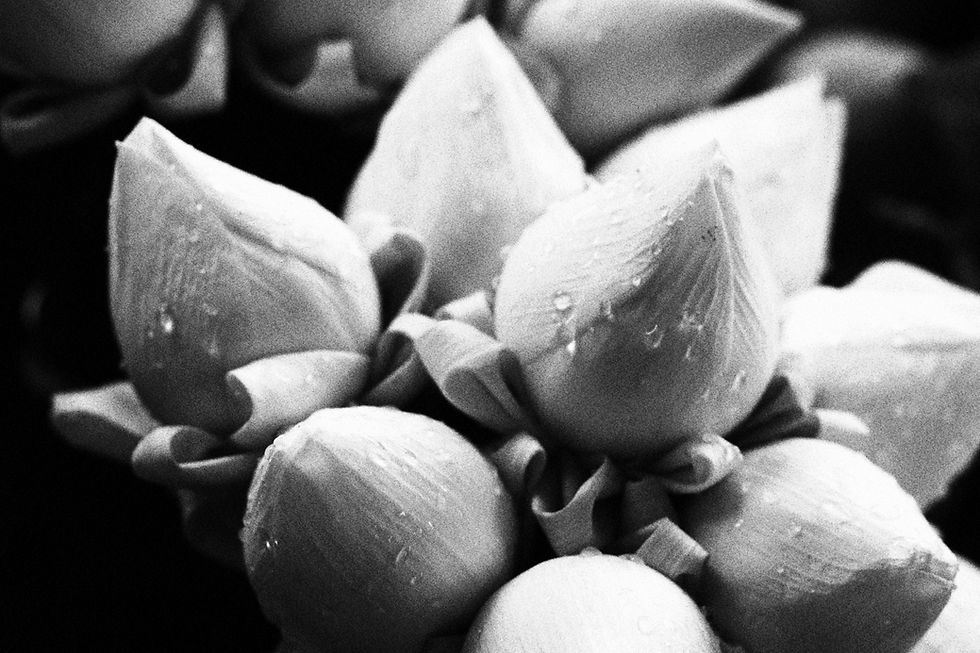
The Walk I Actually Took
I started at Warorot Market (Kad Luang)—a loop I know well—but my eyes couldn’t find anything new. I walked and walked; nothing held. So I drove to Nong Hoi Market, my first time shooting there. Wrong timing: nearly empty and in-between.
Small Experiments, Honest Check‑in
I told myself “shoot color today,” yet I kept toggling back to Grainy Black & White—it matched the quiet better than the colors did. I stopped chasing faces and worked on details and light instead: borders between sun and shade, reflections, textures, and how plastic or metal softened a highlight.
After about two hours, I called it. My mood wasn’t shifting, and I could feel frustration starting to make choices for me. Better to go home, reset, and return kinder.

What “Nothing” Taught Me (Again)
1) Intention reduces noise—but can also narrow your seeing.Focusing on hands made me blind to other honest scenes for the first thirty minutes. When I loosened it—“hands or their echoes” (shadows, tools, wear)—the world opened back up.
2) Portraits follow rapport, not schedule.On days like this I stop asking and return to pure observation. Rapport often starts as a presence without the camera at my eye.
3) Good frames often require time I didn’t give.I left three nearly‑good scenes too early. Ninety more seconds and the right face might have crossed the light. Patience edits better than any crop.
4) Light is the quiet editor.Flat light pushed me to chase color and gesture; contrast would have carried shape. On low‑contrast days I should commit to layers, reflections, and edges instead of hunting for drama that isn’t there.
5) Constraints work best when they’re kind.The 85mm forced clarity. I didn’t even switch to the kit lens—part honesty, part laziness. Next time I’ll choose one lens on purpose and live with it.
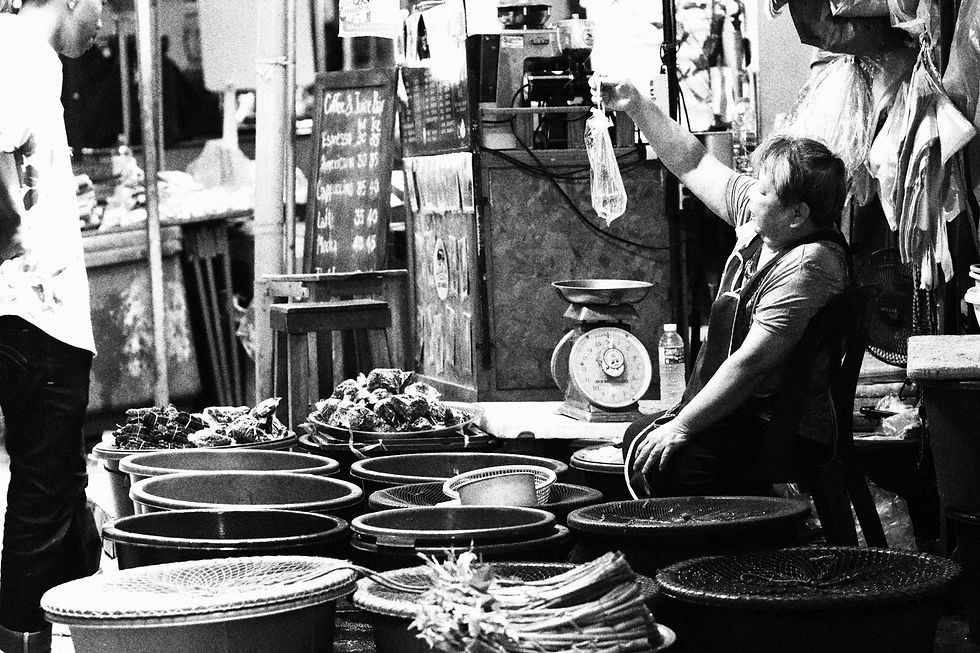
Micro‑Drills I Ran Mid‑Walk
When the keepers don’t appear, I switch to practice mode. Saturday’s drills:
Edges: stand at the border of sun and shade; make five frames where faces cross that soft line.
Three‑beat sequence: for any small scene, shoot scene → portrait → detail; even if the portrait is a refusal, I still take the scene and detail.
Shapes without faces: find triangles, circles, repeating lines; build a frame that reads even if no one looks at the camera.
Motion honesty: one burst at 1/60–1/80s for useful blur (feet, hands, steam), then one at 1/500s to feel the difference on the same moment.
Background first: choose the cleanest background I can find, then wait for life to enter it instead of chasing life into messy backgrounds.
Every drill produced almost‑frames. Almost is enough when we’re training the eye.

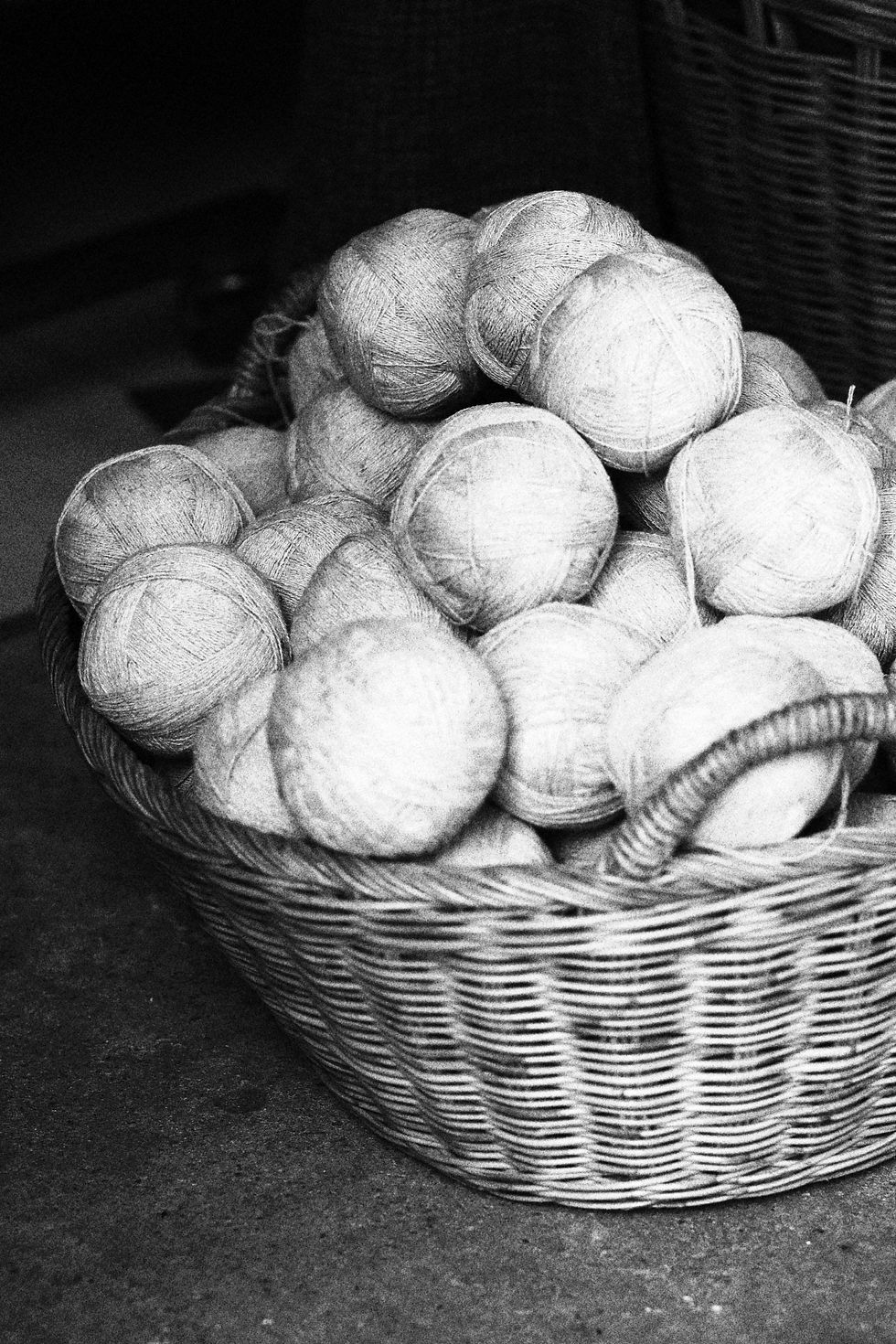
Field Notes (so I remember where to return)
Warorot — fabric row: great textures but morning signage cluttered the top of frame. Return: later afternoon when banners are rolled up; try the white wall for bounce.
Warorot — riverside corner: reflective puddles after brief rain; heavy foot traffic cut reflections. Return: right after rain with fewer people; kneel lower for cleaner geometry.
Nong Hoi — blue door alley: gentle side light, patient cat, peeling paint. Return: bring the 85mm only; wait longer; ask the shop owner for a portrait by the door.
I dropped pins with simple notes: “16:40 sweet light,” “after rain, low angle,” “ask owner in Thai; bring print if he agrees.”
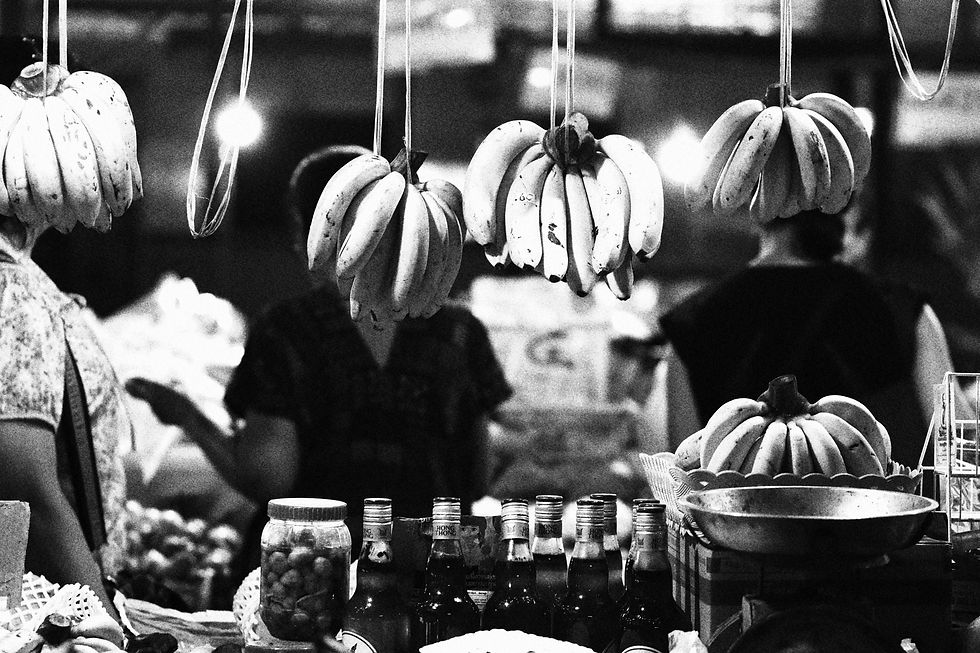
What I Brought Home (Besides “Nothing”)
Location memory I can act on. Pins and sentences beat vague “I should go back.”
A calmer pace. I chased less, waited more. Even without keepers, that shift matters.
A better question. Instead of “Why didn’t I get it?” I’m asking, “What did the scene need that I didn’t give—time, angle, or permission to be ordinary?”
A Return Plan (Same Loop, Different Terms)
Time: go back on a weekday late afternoon for kinder side light.
Constraint: one lens only (85mm) to keep the voice coherent.
Assignment: build a three‑image story in each anchor (scene, portrait, detail) and leave only when all three exist—or the light is gone.
Human loop: bring two mini prints from previous portraits to close the circle. Trust often opens the next door.
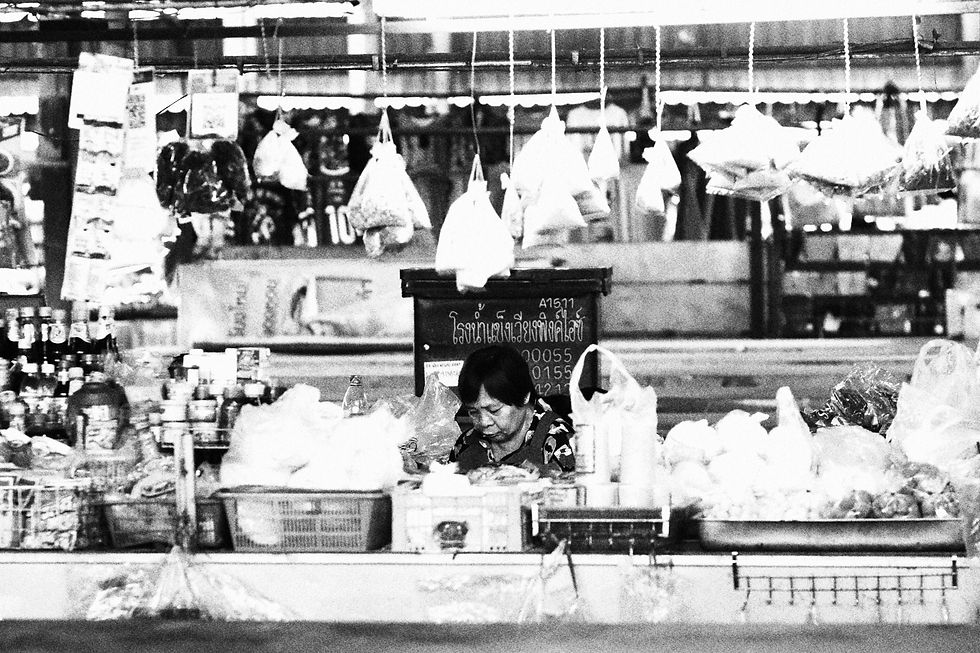
Tips for Empty Days (From Someone Who Has Many)
Rename the day. It wasn’t a failure; it was a study session.
Journal one paragraph. Names, smells, colors, a sentence you overheard. Those notes become captions—or routes.
Edit quickly, kindly. First pass for obvious rejects, second for maybes; don’t torture the files looking for greatness that isn’t there.
Pin the almost‑frames. Mark exactly where the background worked. Backgrounds don’t move; people will.
Go again soon. Return before the memory fades. Small improvements stack.
Chasing the “Perfect Shot”? (A kinder metric)
I’ve chased it. We all do. The “perfect shot” seduces with its clean background, rare gesture, and instant validation. But in the field it behaves like a mirage: the closer you run, the further it steps away, until you’re sprinting past honest pictures to chase an idea. On empty days, that chase narrows my vision and squeezes the joy out of the walk. Portfolios aren’t built from unicorns—they’re built from a thousand true frames stacked over months: some sharp, some soft, most imperfect, all sincere.
Perfectionism only helps if it guides me instead of punishing me. So I swap outcome goals for process metrics—things I can actually control in the moment. On Saturdays like this, I measure success differently and write it down after the walk:
Did I show up and pay attention? Showing up on a low‑energy day strengthens the habit; attention is the muscle that finds light a second earlier next time.
Did I treat people with respect? Consent and kindness travel forward—today’s “no” often becomes tomorrow’s "maybe" because the interaction felt safe.
Did I learn one small thing about light or timing? A note like “flat morning → work edges and reflections” turns frustration into a usable rule.
Did I leave with a note or a pin for a better return? Backgrounds don’t move; people will. A single pinned corner can birth a future keeper.
If those answers are yes, the day matters. I don’t need a hero frame to justify the time; I need evidence that my eye got a little sharper and my ethics stayed intact. That is how bodies of work are made—quiet increments, not jackpots.
Great frames arrive as byproducts of craft, patience, and return visits. The picture I want at Warorot or Nong Hoi will likely happen where I already stood, only after I’ve stood there often enough to read the rhythm. Keepers are what the practice pays out when you show up without squeezing. I don’t need perfect. I need true.
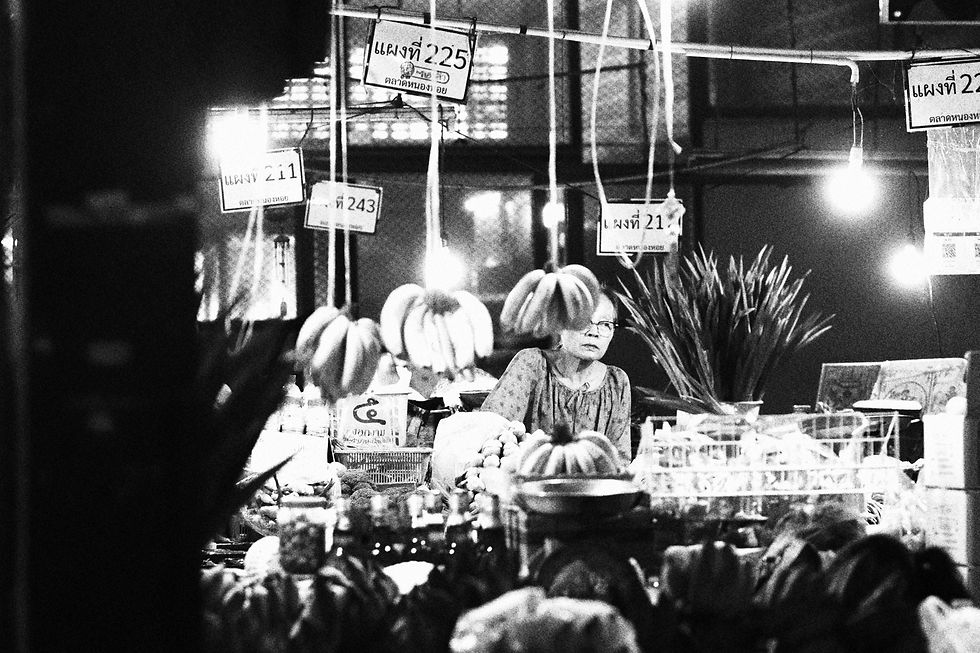
Conclusion
Saturday didn’t feed the portfolio. It fed the practice. Empty days are part of the craft—days when you trade trophies for training, pressure for patience, chasing for attention. I walked, I asked, I waited, I missed, I learned. I planned for color and chose Grainy Black & White instead, and let details and light take the lead. That’s a good day by another name.
What counts on days like this is quieter: presence, respect, and the notes I’ll act on. Success looked like pinning backgrounds, writing one sentence about the light, and choosing to go home before frustration soured my seeing. Those choices build tomorrow’s pictures more than any single hero frame ever could.
I’ll return to Warorot and Nong Hoi with simpler terms: weekday late afternoon, one lens (85mm), and a three‑image assignment at each anchor—scene, portrait, detail. Not to “redeem” Saturday, but to continue the conversation I started with the place and the people.
If Street photography is presence, then even “nothing” is something. It’s proof that we showed up, paid attention, and left a breadcrumb trail back to where the work will happen next.








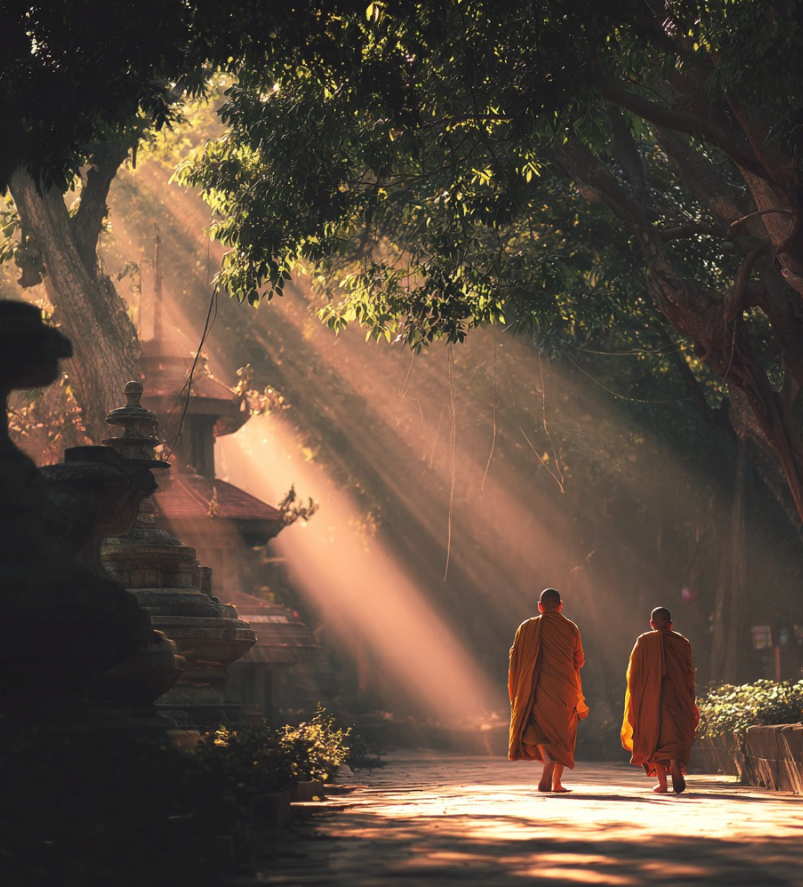
Comments